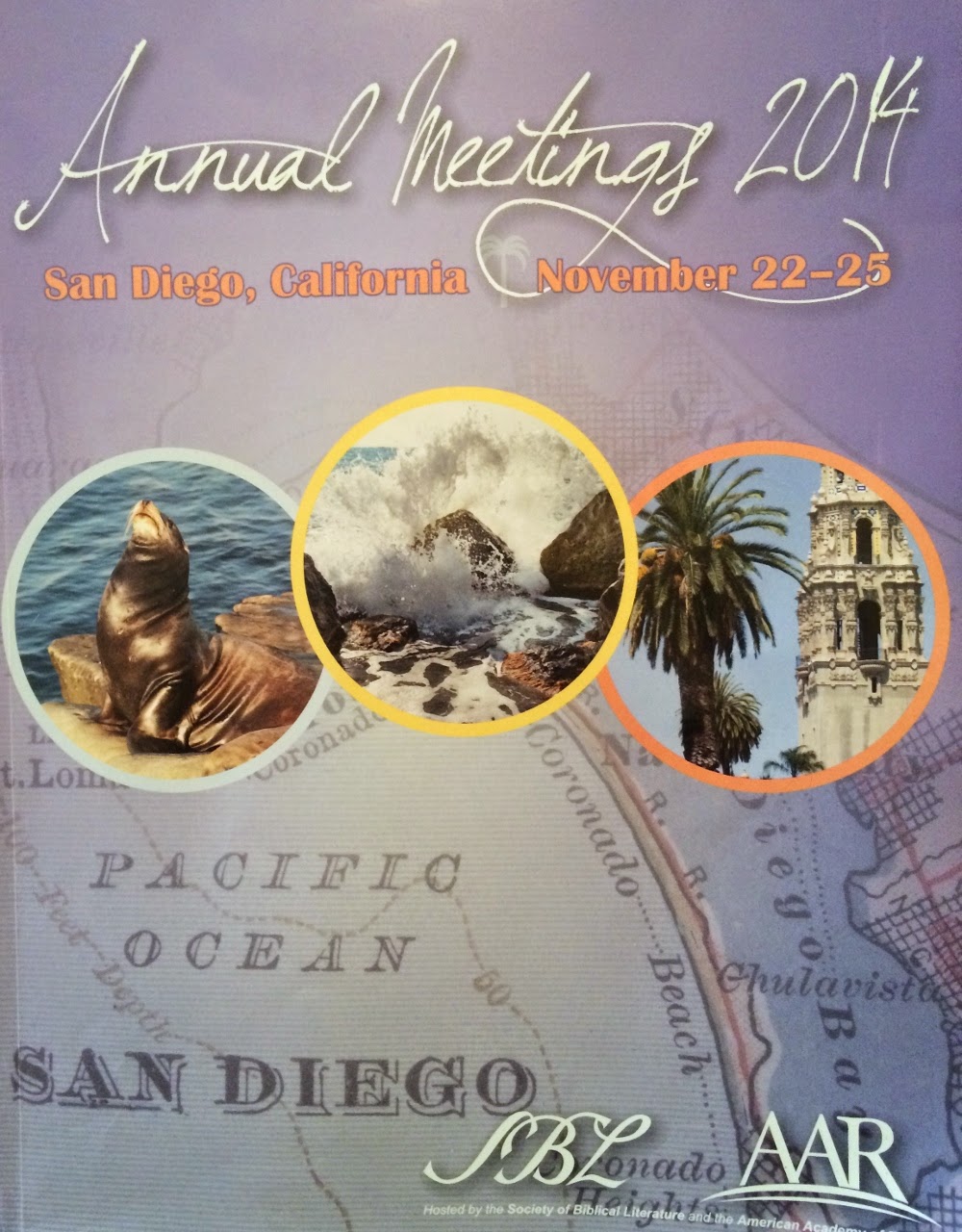[Warning! going turbo nerd again:] Remember that in a previous
post (long ago, in a time far far away...[here]) I cited Thiessen’s definition
of competitive syncretism
as: “Rivals in the marketplace in part resemble one another ... They
have to 'imitate' one another in order to outdo one another in the imitation” (A
Theory of Primitive Religion; p. 49). In this earlier post, I used Thiessen’s
definition as a template and but jettisoned the problematic term ‘syncretism’ to
give the category competitive
acculturation. Here in this post, I would like to give an example of
competitive acculturation from ancient philosophical discourse (a long overdue post).
Here is a quotation from the Middle
Platonist Alcinous in his handbook on Platonism entitled the Didaskalikos.
Here he pokes fun at his rivals, the Stoics, on what constitutes the basis for
human flourishing (εὐδαιμονία):
- Contemplation (θεωρία),
then, is the activity of the mind when it
intelligizes the intelligibles, but practice
(πράξις) is the activity of the rational soul which happens through the body.
The soul which contemplates the divine and the thoughts of the divine is said
to be in a good state (εὐπαθεῖν), and
this state of the soul is called ‘wisdom’ (φρόνησις), and this, one may
say, is none other than assimilation to the divine. – Alcinous, Didask. 2.2 (= Whittaker 153.2–9; Eng.
trans. follows Dillon, Alcinous, p.
4)
The key
word that is the hinge text for competitive acculturation is εὐπαθεῖν. In
the thematic context of the passage: when are human beings at their best? (you can call it “living according
to virtue” like the Stoics, or call it “assimiliation to the divine” as the
Middle Platonists do), the Stoics and Platonists had contrasting views on the τέλος or end/goal of life. The Stoics
believed if we extirpated harmful emotions completely, and are ruled only by
rational good emotions called the εὐπάθειαι, then we can live life
according to virtue and be fully human.
According to the Stoics, the
sage could experience some “good emotions” or “good affective states” called εὐπάθειαι – i.e., joy (χαρά), willfulness (βούλησις), and caution (εὐλάβεια) – which stood as the positive counterparts to
the harmful the passions of the soul which threaten to derail human life and
character, namely, pleasure, lust, fear and grief. That is, joy stood as the positive counterpart to pleasure,
willfulness to lust/desire, and caution to fear, with no apparent equivalent εὐπάθος corresponding
to grief (see Diogenes Laertius, Lives
7.116; Cicero, Tusculan Disputations.
4.12-14; note: Cicero translates εὐπάθειαι
as constantiae or
"stable states").
 |
Roman copy (1st cent. AD) of a Hellenistic original (200 BC)
Head of Chrysippus, 2nd successor of the Stoa
Photo taken by Max Lee © 2010 British Museum |
So here is the punchline: in philosophical discourse, the
Stoics own the language of the εὐπάθειαι. It would be impossible for
the philosophically informed reader to miss the allusion then of Alcinous to
the Stoic doctrine of the good emotions with his use of the word εὐπαθεῖν
especially
in the context of the discourse: what does it mean to flourish as a human
being.
Alcinous
effectively says the Stoics are wrong. Good emotions are inadequate. We do not
reach our potential until we participate and commune with the divine through
the process of contemplation (θεωρία
= how the
mind sees the transcendent world and models its life after what it sees).
Ethical practice (πράξις) is
important but secondary to the contemplative life which provides a paradigm for
moral living. If we see what beauty, goodness, and justice is in the
transcendent Forms of Beauty, Goodness, and Justice, then we can shape our
souls and govern society according to the beauty, goodness and justice we see.
So the example
or case for competitive acculturation works if one can demonstrate that:
- a
particular group (philosophical, political or religious) owns the terminology
or language like the Stoics did for the terms εὐπάθειαι / εὐπάθος
- a rival group uses the same language in a
literary context that evokes the discourse of their competing interlocutors (in
this case, what is the τέλος or end/goal
of life? what is human flourishing?)
- the rival group offers an alternative solution or thesis
in contradistinction to the solution offered by the other group (Alcinous
posits theoria as the key to human flourishing not the good emotions of
the Stoics)
- often times there is a double entendre or word play: “the
good state” (εὐπαθεῖν) of a human being is not the Stoic
good emotions (εὐπάθειαι) and extirpation of the passions but the Platonic mind’s
assimilation to the divine.
The question, then, is with Paul’s use of such charged words
as εὐαγγέλιον (gospel), εἰρήνη (peace), κύριος (Lord), σωτήρ (Savior), κτλ., did Paul consciously pit his gospel against the good news of the imperial cult? Did the imperial cult own this language? or do these terms find wider currency
elsewhere? Going beyond whether Paul had an anti-imperial gospel or not, do current claims to find any Greco-Roman allusion in Paul which are
competitive meet all or some of the above conditions distilled from Alcinous’
interaction with his Stoic rivals?
We are still, in the end, just scratching the surface of how
methodologically do we approach the problem and detection of Greco-Roman
allusions in Paul, but I thought this example would give us some food for thought to move forward on the issue.








.jpg)














